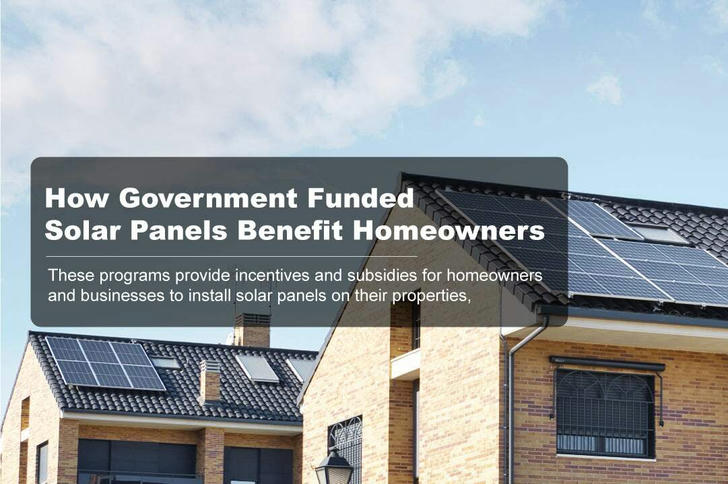️U.S. government Incentives for Solar Panels in 2025: What You Can Get
Tired of rising electricity bills? More Americans are switching to solar—not just for green energy but to save big. In 2025, powerful government incentives for solar panels make solar more affordable than ever.
In this article, we'll break down the government incentives, and real-life examples of American homeowners who made the switch — and how you can potentially save thousands starting this year.

Why Install Solar Panels in 2025?
The U.S. Energy Information Administration reports a 40%+ increase in residential solar installations in 2024—and 2025 is set to grow even more.
Top reasons to install now:
- ⚡ Electricity prices rose by more than 14% in two years
- 🟥 Federal tax credit covers 30% of installation costs
- 🏠 Solar increases home value by about 4.1% (Zillow)
- 💡 Monthly bills can drop by up to 60% depending on your system
The Federal Solar Tax Credit (ITC)
The U.S. government lets you claim 30% of your solar system cost as a tax credit.
Example:
If your system costs $18,000, you get a $5,400 tax credit on your federal taxes.
🟥 This credit starts to phase down in 2033.
Federal and State Solar Panel Rebates You Can’t Miss
Many states offer extra solar panel rebates and credits to cut your cost further, on top of the federal incentives.
| State | Program Name | Max Savings |
|---|---|---|
| California | SGIP + Net Metering | 🟥 $1,000+ per kW solar panel rebate |
| New York | NY-Sun Program | 🟥 $0.35–$1.00 per watt in government incentives for solar panels |
| Massachusetts | SMART Program | Fixed payments for 10 years |
| Texas | Utility Rebates | Varies by provider |
| New Jersey | SREC Program | Earn monthly credits |
🟥 Many solar panel government rebate programs have limited funds—apply early to lock in savings.
How to Apply for Solar Panel Government Rebates and Incentives
Contact your solar installer: Most installers handle applications for federal and state solar panel rebates.
Check eligibility: Make sure your home and project qualify for government incentives for solar panels.
Gather documents: Contracts, receipts, and proof of payment are usually required.
Claim the federal solar panel rebate:
- Use IRS Form 5695 during tax filing.
- Keep all records.
Apply for state and local solar panel rebates:
- Visit your state energy office or local utility’s website.
- Deadlines and forms vary.
Follow up on your application: Some rebates require inspection or grid connection proof.
Real Story: The Rodriguez Family in Phoenix, AZ
“We installed a 7 kW solar system. Our monthly bill dropped from $190 to $40. We received a $5,400 federal solar panel government rebate and a $2,300 local solar panel rebate. We expect to break even in 5 years.”
— Luis Rodriguez, Phoenix resident
Most homeowners break even in 4–8 years and save $20,000 to $40,000 over the system’s lifetime.
Are You Eligible?
You usually qualify if:
- You own your home
- Your roof gets enough sun (south or west-facing)
- You owe federal taxes (to claim rebates and credits)
- Your system is installed by a certified company
Some solar panel government rebate programs require projects to finish by the end of 2025.
FAQs
Q: My electric bill is low. Is solar worth it?
A: Yes. Tax credits, government incentives for solar panels, and selling excess power still save money.
Q: Can I finance my solar system?
A: Yes. Many installers offer payment plans.
Q: Planning to move soon?
A: Homes with solar sell faster and for more money.
Summary: 2025 Is the Year to Go Solar
With 30% federal solar panel rebate tax credits, ongoing state rebates, and rising electricity prices, solar panels offer serious savings and add home value.
🔗 References
- U.S. Department of Energy – Solar Energy
- IRS – Form 5695 Instructions
- Zillow – Solar Homes Sell for More
- DSIRE – State Incentives Database
